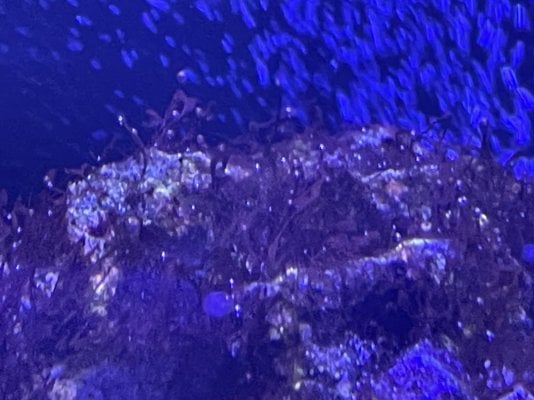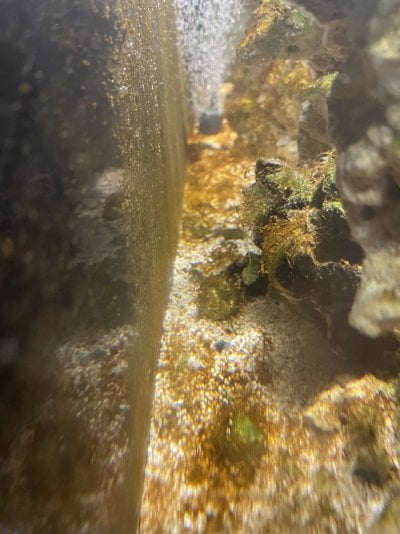I’m desperately seeking help or guidance to ID whatever has taken over my 40 gal reef tank. My tank has been running for approximately 6 months. It is a 40 gal. AIO. I have been dosing Tim’s waste away for the last two weeks with no improvement. I have recently (yesterday) treated with chemiclean, also with no possitive results. I realize the treatment commonly takes 2 to 3 days but would have expected some improvement after 24 hours. The substance multiplies when lights are on but lessens over night. I have been blasting it off rocks and gravel with a turkey baster twice a day but it returns quickly. I also perform 15% water changes weekly. My parameters are as follows; Temp- 78, Sal- 1.025, Nitrate- 5, Kh- 9.1, Mag- 1220, Cal- 450, PH- 8.0, PO4- .1. I have done a lot of research and have no clear identification but I am leaning toward Gelidium which I have read horror stories regarding how difficult it is to remove completely. I have attached a video and pics for help with ID. I do not have a microscope and will purchase one if I get a reasonable consensus on a possible Dino ID. I appreciate any assistance you can provide.




























